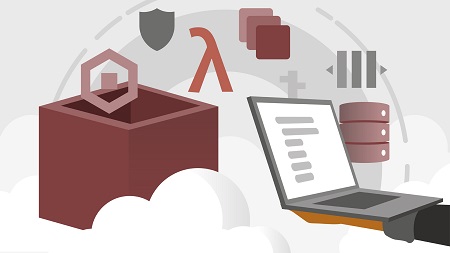
English | MP4 | AVC 1280×720 | AAC 48KHz 2ch | 3h 17m | 1.03 GB
Modern companies need developers who can accomplish business objectives with Amazon Web Services (AWS) without over-engineering in-house solutions. But with AWS now listing over a hundred different service offerings, getting a holistic sense of the platform can seem daunting. In this course, Jeremy “JV” Villeneuve breaks down key AWS services, giving developers a high-level look at the different ways they can host applications within AWS, as well as how to decide which services will fit their use case. He introduces you to cloud computing by tying the concepts to real-world hardware, such as hard drives and network switches. Get the information you need to match product names to what each service does (as well as to the corresponding architecture icons), so you can explore them further.
Topics include:
- Proper security for the AWS root account
- Identity and Access Management (IAM)
- Regions and availability zones
- Creating an EC2 instance web server
- Editing security groups
- Storing and serving files from AWS
- Scaling with Elastic Load Balancer (ELB)
- Hosting databases within AWS
- Running containers on AWS
- Machine learning services within AWS
- DevOps with AWS
- Security on AWS
Table of Contents
1 What is the best way to use AWS
2 Course objectives
3 What you need to know
4 The AWS root account
5 Create an IAM user
6 Generate an AWS secret key
7 Set up a billing alarm
8 On-premise infrastructure
9 Birth of the cloud EC2 and S3
10 Regions and availability zones
11 Create an EC2 instance
12 EC2 types
13 Set up a web server
14 Security groups
15 Autoscaling
16 Elastic Block Store (EBS)
17 Elastic File System (EFS)
18 Simple Storage Service (S3)
19 Upload a file to S3 from the AWS CLI
20 Using the SDK to retrieve a file from S3
21 IAM roles for EC2
22 S3 bucket features and S3 Glacier
23 Serve content faster with CloudFront
24 Virtual Private Cloud (VPC)
25 Internet and NAT gateways
26 Elastic IPs
27 Using VPNs to access private subnets
28 Scaling with Elastic Load Balancer (ELB)
29 DNS with Route53
30 What is Database as a Service (DBaaS)
31 Relational Database Service (RDS)
32 NoSQL databases
33 In-memory caches
34 Big data databases
35 Messaging services
36 Elastic Beanstalk
37 Running containers on AWS
38 Lambda
39 Batch processing
40 User authentication
41 Mobile services
42 Machine learning
43 Media services
44 Internet of Things (IoT)
45 What is DevOps
46 CI CD with AWS
47 Infrastructure as code with AWS
48 Monitoring with CloudWatch
49 AWS Shield and firewalls with WAF
50 Inspector, GuardDuty, and Macie
51 CloudTrail and Security Hub
52 Next steps
Resolve the captcha to access the links!